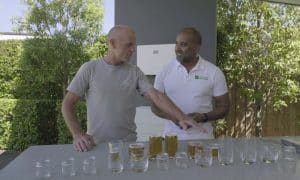A multinational team working out of the University at Buffalo’s School of Engineering and Applied Sciences have developed a prototype solar water purifier capable of producing drinkable water from contaminated or salty liquids at 2.4 times the rate of leading commercial products.
The solar still system, called a “solar vapour generator”, cleans and desalinates water by converting sunlight into heat to evaporate it; leaving bacteria, salts and other harmful substances behind. The water vapour is captured and returns to liquid form.
The technology isn’t new; solar stills are commonly used to decontaminate and desalinate water around the world, but the UB researchers wanted to improve the energy conversion of conventional solar water purifiers, which can be as low as 30-40 percent.
“People lacking adequate drinking water have employed solar stills for years, however, these devices are inefficient,” said Haomin Song, PhD candidate at UB and one of the study’s leading co-authors.
“For example, many devices lose valuable heat energy due to heating the bulk liquid during the evaporation process. Meanwhile, systems that require optical concentrators, such as mirrors and lenses, to concentrate the sunlight are costly.”

In a study published in the journal Global Challenges, the team describe their prototype.
To maximise solar convection, the device’s body was made from an insulating layer of cheap polystyrene foam and a porous layer of hydrophilic paper coated in carbon black powder.
The thick paper absorbs surface water while the carbon black captures sunlight, using the heat created to turn the water into vapour.
The researchers found they achieved a record 88-percent solar thermal conversion efficiency under one-sun concentration. This was due in-part to the way the carbon black paper used in the system only converts surface water, which evaporated at 44 degrees Celsius.
More importantly, they said the still could produce 3-to-10 litres of water per day, compared to most commercial solar stills of similar size that produce 1-to-5 litres per day.
By utilising cheap materials like poly foam and carbon black the device can be built for $1.60 per square metre, a vast reduction from solar concentrating stills which can cost over $200 per square metre.
“The solar still we are developing would be ideal for small communities, allowing people to generate their own drinking water much like they generate their own power via solar panels on their house roof,” says Zhejun Liu, a visiting scholar at UB, PhD candidate at Fudan University and one the study’s co-authors.
Other simple solar driven water purification devices we’ve covered in the past include Solvatten and a tiny device that can disinfect contaminated water in minutes.









































